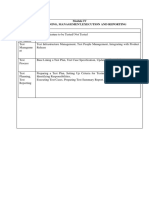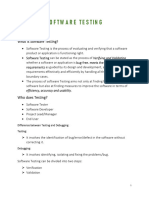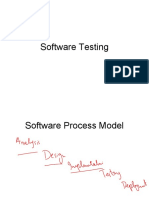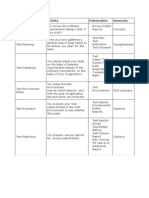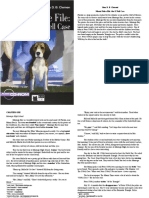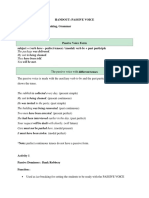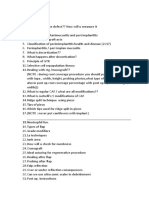Testing Process
Requirements Analysis
Purpose
During this phase, the requirements are read and analyzed.
This phase helps to refine the scope of the testing. If any feature is not testable, it
is communicated during this phase so that the mitigation strategy can be planned.
This phase should be in sync with the requirements analysis process.
Activities
Review and clarify all requirements documents
Testing feasibility analysis - have brainstorming sessions with other teams and try
to find out whether the requirements are testable or not
Non-functional requirements review
Test Planning
Purpose
The test team identifies:
Activities
test procedures;
hardware, software, and network required to support test environment;
test data requirements;
a preliminary test schedule;
non-functional measurements;
a procedure to control test configuration and environment;
defect-tracking procedures and associated tracking tools
Define the scope of testing in accordance to project phase
Plan all testing activities / all agreed testing types
Set the test activities
Identify dependencies for testing
Identify test environments specifics
Test preparation
Purpose
Test preparation means all activities needed to be performed in order to be able to
execute testing, general testing objectives are transformed into tangible test
conditions and test cases
Activities
Test Analysis defines WHAT to be tested
Test Design defines HOW to test
Test Environment defines WHERE to test
Test Data defines WITH WHAT to test
Review the requirements or other input in order to identify what needs to be
tested
Create, review, update the test cases
Create / Identify / Update the test data
Identify the test environments needs and address them
Test execution
Purpose
Test execution is the activity of running the application and comparing the
expected results with actual results using various test techniques and test data.
The tests are run, the defects are identified and documented.
�Testing Process
Requirements Analysis
Purpose
During this phase, the requirements are read and analyzed.
This phase helps to refine the scope of the testing. If any feature is not testable, it
is communicated during this phase so that the mitigation strategy can be planned.
This phase should be in sync with the requirements analysis process.
Activities
Review and clarify all requirements documents
Testing feasibility analysis - have brainstorming sessions with other teams and try
to find out whether the requirements are testable or not
Non-functional requirements review
Test Planning
Purpose
The test team identifies:
Activities
test procedures;
hardware, software, and network required to support test environment;
test data requirements;
a preliminary test schedule;
non-functional measurements;
a procedure to control test configuration and environment;
defect-tracking procedures and associated tracking tools
Prioritize the test execution
Execute test cases as planned
Compare the expected results with actual results
Defects are reported and proposed for fixing
After the fixes the tests are executed again and the defects are validated
Analyze results
Record and track the test execution results and coverage
Check the planned testing scope vs. execution
Test environments maintenance (clean-up, restore, backup, configurations)
Test reporting
Purpose
Test reporting is the activity where test execution is assessed against the defined
objectives for testing. Software quality and readiness are evaluated, documented
and communicated based on the agreed quality measures (outcome of the test
results, number and severity of defects, criticality of residual risks etc).
Activities
Assess the test results
Review existing opened defects
Provide release recommendations
Create test reports for stakeholders as agreed. If no specific requests from the
client, the test report template is going to be used
Test closure
Purpose
Test closure activities collect data from completed test activities to consolidate
experience. Also the completion of all deliverables is checked.
Activities
Archive repository with project artifacts (docs, emails, tools) and share it with
�Testing Process
Requirements Analysis
Purpose
During this phase, the requirements are read and analyzed.
This phase helps to refine the scope of the testing. If any feature is not testable, it
is communicated during this phase so that the mitigation strategy can be planned.
This phase should be in sync with the requirements analysis process.
Activities
Review and clarify all requirements documents
Testing feasibility analysis - have brainstorming sessions with other teams and try
to find out whether the requirements are testable or not
Non-functional requirements review
Test Planning
Purpose
The test team identifies:
test procedures;
hardware, software, and network required to support test environment;
test data requirements;
a preliminary test schedule;
non-functional measurements;
a procedure to control test configuration and environment;
defect-tracking procedures and associated tracking tools
relevant people
Do lessons learnt meeting and create lessons learnt document ( Include what
went well, where are the scope of improvements and what can be improved)
Review existing opened defects and provide a resolution














